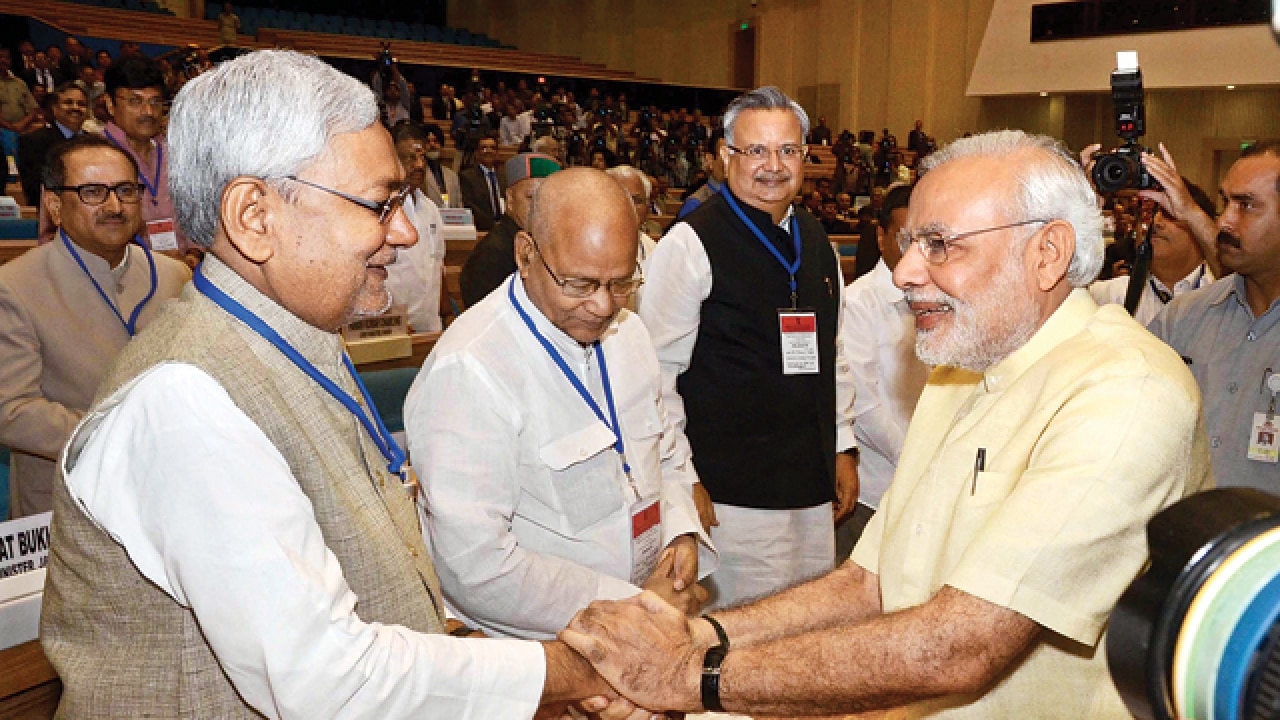
The sequence of events that led to Nitish Kumar joining forces with the BJP is, essentially, politics at its finest. In so many ways, the entire episode, if you will allow me to draw a parallel, was like a T20 match. Obviously, the episode was scripted. Within 15 minutes of the Bihar CM resigning, PM Modi in a tweet lent his support to the dramatic move. Immediately, a Parliamentary Board was set up and, within an hour, they decided to ally with Nitish. In a follow up move, Nitish instantly accepted their support. This T20 politics was brilliantly coordinated and precisely executed at such a blistering speed that in the end the RJD supremo Lalu Yadav was pushed into a corner, feeling like the rug was pulled from under his feet. What’s more, in one fell stroke, PM Modi turned the game in his favour. His masterly move reduced a politician, who, about two years back was harbouring Prime Ministerial ambitions, to being another member in his coterie. From a challenger, he became a courtier and one of the 18 Chief Ministers in states where BJP and/or its allies are in power.
Amidst this political tussle, one thing we should not be remiss of is the utility of resignation as a weapon of mass destruction in the hands of those who are politically adept. When used strategically, it delivers astonishing results, as Nitish has exemplified. Had Tejashwi Yadav tendered his resignation after allegations of corruption were levelled against him, the political dynamics in Bihar would have been completely different. But it was Nitish who cashed in on the opportunity by tendering an instant resignation and following it up with an instant swearing-in, while his opponents were stunned into inaction. For news enthusiasts and political scholars, this is a unique case study, which will remain unprecedented for a long time to come.
For the Congress party, this is a failure of staggering proportions. Nitish was the last redoubtable leader in their camp who could have posed a challenge to the BJP and to PM Modi in 2019. With him out of the picture, there is nobody standing against the BJP who can don the mantle of a leader with a pan-India appeal. Clearly, with him leaving the camp, the Opposition has been deprived of a credible national face. Nitish was the sole challenger and PM Modi has neutralised him within 20 months of him coming to power. It was expected from the Congress, especially out of Sonia and Rahul Gandhi that they would rise to the occasion and play a smarter role in this episode, but that has not been the case. One way or the other, they ought to have prevented Nitish from deserting their camp. Presently, whatever hopes the Congress party had of leading the Opposition parties in 2019 have been shattered to bits.
In the meanwhile, it is the BJP which has emerged as the clear winner. Deftly, PM Modi and BJP President Amit Shah choked him politically and compelled him to strike a compromise with them. The writing on the wall was clear from a long time, to anyone who cared to notice. During demonetisation in November last year, Nitish gave his first indication that he was not happy with the RJD chief and lent his support to the groundbreaking monetary scheme. Another clue was also given during demonetisation as well. The RJD chief had invited West Bengal CM Mamata Banerjee to Patna to address a rally and the outspoken CM had referred to Nitish as vishwasghaati (betrayer to the cause), which Nitish did not take to very kindly. Even in run up to the Presidential elections, Nitish chose to skip the luncheon hosted by Sonia Gandhi, while he attended a lunch hosted by PM Modi in honour of the Mauritian counterpart Pravind Jugnauth. Even on GST, Nitish stood in support.
Going ahead, the alliance between Nitish and the BJP will work if the Bihar CM succeeds in projecting himself as a crusader against corruption. However, the political history of Bihar is testament to the fact that caste combinations play a pivotal role in electoral results. Overcoming this caste combination challenge that plays in favour of Lalu Yadav will be the biggest challenge for Nitish. Even today, it is RJD with 80 MLAs that commands the strongest position in the Bihar assembly. Nitish’s JD(U) with 71 MLAs comes second. In my opinion, the new alliance will do well if it treats its fight against corruption as the epicentre and the motivation behind the tie up. The RJD, on the other hand, will quite likely revive issues of caste and communalism. Further, Lalu’s party has a stronger voter base in the backward classes and within the Dalit community. If these voters consolidate, then the RJD will emerge as a stronger contender.
There is another risk that could play out: Hypothetically speaking, if six months into this alliance, Lalu Yadav and his family members are arrested, then one can count on him on playing the martyr card and capitalising on the sympathy wave that will be unleashed in his favour. If this does transpire, then the political scenario in Bihar will be polarised. In that case, one chunk of the electoral pie will go to Lalu, while the other chunk will go to BJP, and Nitish will be most probably sidelined.
No matter what the future holds, this chapter is sure to have an enormous bearing on the strategy for 2019 elections.
The author is the Editor-In-Chief, Zee Media